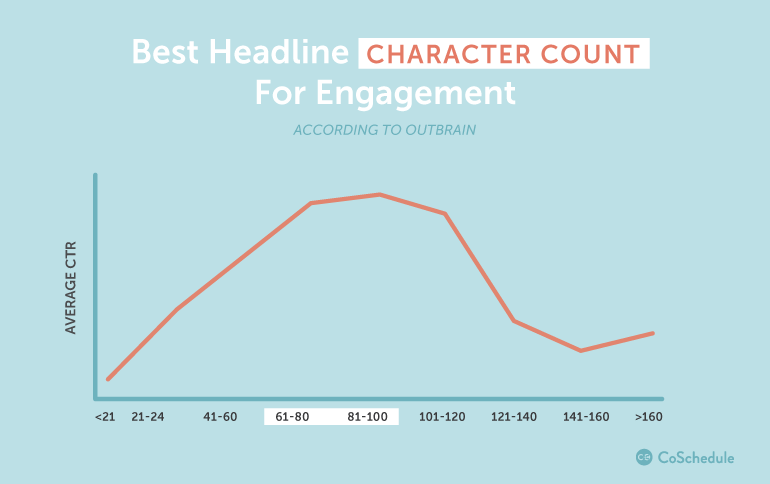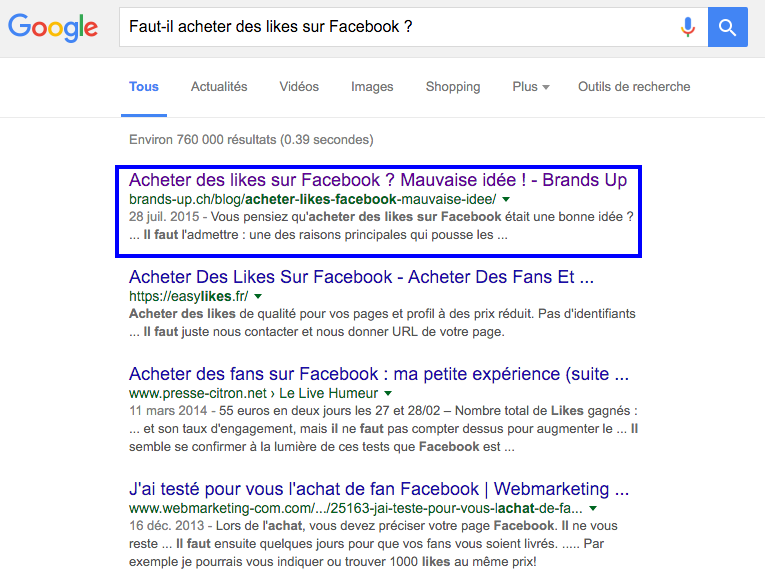If you regularly publish content on your website/blog, you are probably aware that your choice of title is one of the most important elements.
One of the most difficult, too.
According to Neil Patel, 8 out of 10 users read your article title while only 2 in 10 actually read the article itself. It is therefore absolutely crucial to focus your efforts on writing winning titles.
What are the questions that you should ask yourself before writing your title? How can you write it without falling into the realm of clickbait titles?
In this article we will share 5 tips that can help you produce winning titles that work for both users and search engines.
Happy reading!
1. Involve your audience
If you want your readers to be interesting, you need to involve them. Opting for a more personal touch allows you to connect more easily with your readers.
Instead of writing “What you should know about using hashtags”, we prefer “What you need to know about using hashtags”.
2. Get to The Point
By favouring short and concise titles, you win the attention of your audience because it is easier to read. Ideally, your title should be aiming to contain between 65 and 100 characters.
Convenient: Use Snippet Optimizer SEOMofo to preview your titles in search engines.

3. Add value
Your readers need to quickly understand what they will gain by reading your article. We must therefore make them a promise by presenting what they will be able to learn from reading it. In our article “5 Tips to Use Facebook Insights as a Professional”, we promise our reader that they will advance their knowledge and become a professional. Do, however, be careful not to put the bar too high: this could work against you if the content does not follow through on the promise.
4. Answer the Questions Your Audience May Have
If you ask a question in the title of your blog, you should (hopefully) have the answer. Once you have asked the question, visitors want to know the answer and so browse the article. Today, internet users often pose their questions directly to Google. This is reason enough for you to aim to include a question in your article title: you will appear in search results. In July 2015, we wrote an article on buying likes on Facebook. Today, we are position in 1st position for this search term on Google.ch:

5. Numbers
Using numbers if your titles can elicit immediate interest from your audience. Why? The reader will expect to read information that is presented in a condense form that will allow them to save time. Also, it gives a structure to the article and makes it easier to read; this is very useful when trying to attract readers who seek maximum information for minimal effort.
Examples
- - 7 Tips for a Good Start on Twitter
- - SEO – 10 Free and Essential Tips for Beginners
- - Web Marketing: 6 Trends We Predict for 2016
To take away
Writing a headline is not easy. If you have the opportunity, do some research and see which headlines are the most interesting for you.
Finally, here are 3 tools that help you to build fantastic article titles:
- Buzzsumo: Search items that make a buzz
- CoSchedule: Analyzing your title – best performance with a title in English
- Tweak Your Biz: Suggestions of titles in English for a keyword
This article was written by Rachael W.

